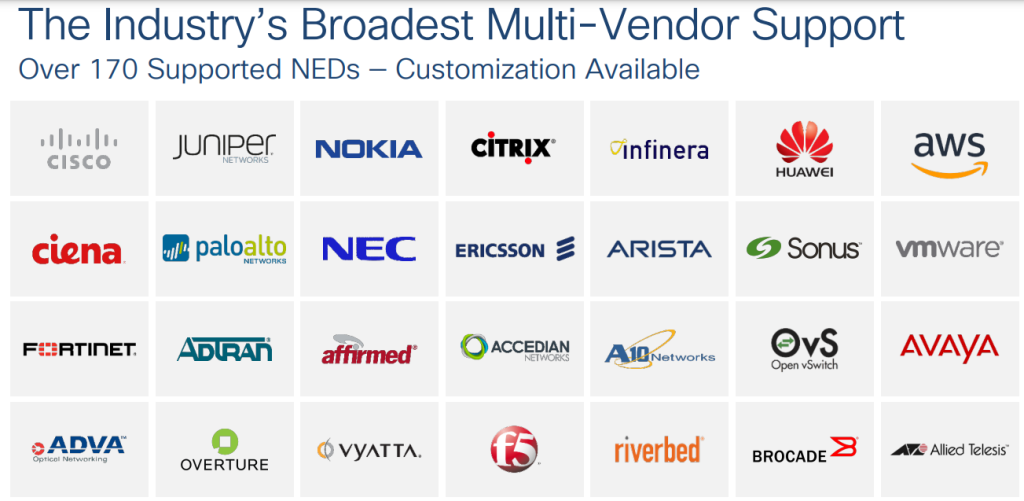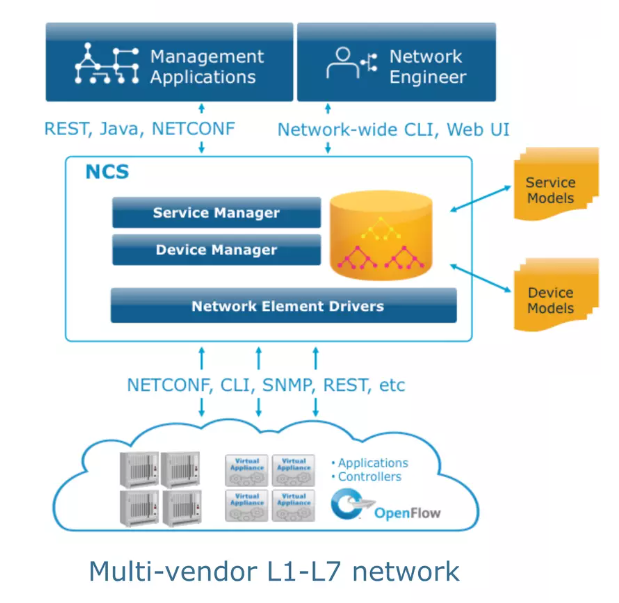What is cisco NSO? It is a multi-vendor network automation and service orchestration software.
This section discusses the benefits and architecture of Cisco NSO.
What is Cisco NSO?
What are network automation and service orchestration provided by Cisco NSO?
Network automation means that you can configure multiple devices at the same time by creating a device configuration template.
Service orchestration means that you can configure a service on your network without giving any commands, but just giving the values of the parameters required to implement the service.
For example, if you want to configure a new VLAN on your network, simply enter the name of the new VLAN and the switches in which you want to have this new network. A new VLAN number is configured in the corresponding switches and it is added to the allowed VLAN list of the corresponding trunk interfacesby cisco NSO
Service orchestration will be implemented using service template which will be discussed during the course.
Additionally, it has the capability of version control like many other automation software. By version control, you can revert back the configuration of not only one device but also the entire network to some earlier versions.
NSO is a multi-vendor automation software
Cisco NSO is a multi-vendor automation software which support more than 170 device types or vendors.
Cisco NSO must have a driver for any device supported by this software. Network device drivers in this software are called NED or network element drivers.
See the links below for a list of some supported NEDs. link1 link2
As you can see, the list of the most important network device vendors can be found in the supported devices list.
Architecture of Cisco NSO
To learn more about Cisco NSO, let’s take a look at the NSO architecture and components. This photo which is taken from cisco documents, shows the most important components of this software.
From southbound, there is a NED or device driver for each device supported In this software.
Depending on the type of devices supported, it communicates with the devices using different methods. CLI, SNMP, NETCONF, and RESTCONF are the main communication methods that this software uses to get or change the configuration of network devices.
More than 170 devices are currently supported by NSO over the southbound interface.
From the northbound, not only network administrators, but also applications can communicate with network devices via this software.
NSO can be managed via CLI and GUI. These methods are primarily used by network administrators to automate networks and orchestrate services through NSO.
NSO can also be managed through NETCONF and RESTCONF which is mainly used by network developer’s and applications to get or set the data of network devices through cisco NSO.
Suppose you as an administrator, orchestrate MPLS VPN service in NSO through CLI or WEB GUI. Therefore, to add a new MPLS VPN customer, we give just the list of PE routers and interfaces in which the new customer is connected.
In the next step, we develop an application to add new customers in MPLS service through the application. In other words, for each new customer, the list of PE routers and interfaces connected to the new customer is given through the application.
This application then communicates with NSO via NETCONF or RESTCONF protocol to transfer each customer information.
Both NETCONF and RESTCONF protocols use YANG data model, which is fully supported by NSO. About the Yang data model and the RESTCONF and NETCONF protocol, we have already prepared a course that you can study from this link.
You see the name “NCS” in the photo which is the old name of “NSO“. You will see the old name many times throughout the course since the name of the software and commands are still “NCS”.
Device manager and Service manager are two main components of this software.
With device manager, you can automate network devices through creating device configuration templates which will be discussed in a few sections.
With service manager, you can orchestrate network services through creating new packages including, configuration template, yang data model and logic codes.
Creating services through NSO is one the most important topic discussed in this course which will be discussed during the course.


